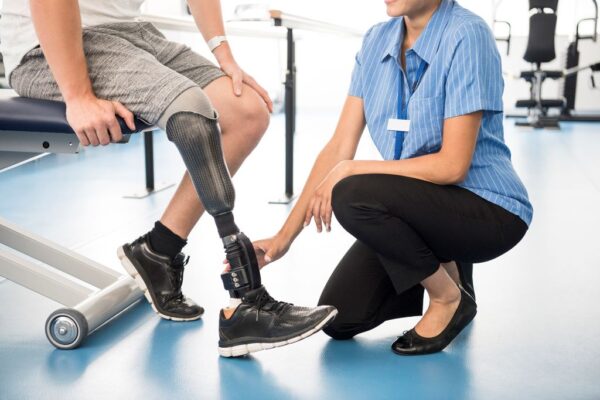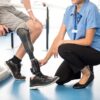

From: 100.00$
The Iran Health Clinic is a reputable medical center that specializes in providing advanced fat transfer treatment to its patients. With a team of experienced doctors who have been trained in the latest fat transfer techniques, the clinic is committed to delivering high-quality care that is tailored to meet the unique needs of each patient.
Using state-of-the-art technology and equipment, the clinic can perform fat transfer procedures that are safe, effective, and minimally invasive. Whether you are looking to restore volume to your face, increase the size of your breasts, or enhance your buttocks, the Iran Health Clinic can help you achieve your desired results.
With a warm and welcoming environment, the clinic strives to make every patient feel comfortable and relaxed throughout their entire treatment process. If you are looking for a trusted medical center for your fat transfer needs, then the Iran Health Clinic is the right choice for you.
Limb amputation is a surgical procedure that involves the removal of a limb, either partially or entirely. This procedure is usually considered as a last resort when other treatment options have been exhausted, and the limb is jeopardizing the individual’s health or quality of life.
During a limb amputation, the surgeon removes the affected limb while striving to preserve as much healthy tissue as possible. The level of the amputation depends on the extent of the disease, injury, or other factors. After the amputation, the remaining stump may be shaped and modified to optimize its function for prosthetic use.
Limb amputation may be suitable for individuals who have:
Limb amputation may not be suitable for individuals who:
Complications associated with limb amputation can include:
Preoperative care for limb amputation involves thorough patient evaluation, including imaging studies and assessments to determine the most appropriate level of amputation. It may also involve optimization of the patient’s overall health and addressing any specific medical conditions to prepare for surgery.
After limb amputation, patients will require comprehensive postoperative care, including wound care, pain management, and rehabilitation. Physical and occupational therapy are crucial for learning to use and adapt to a prosthetic limb, if applicable. Long-term follow-up care is essential to monitor for any complications, provide ongoing support, and optimize the individual’s functional independence and quality of life. Psychological support is also critical for individuals as they adapt to the physical and emotional changes following limb amputation.
Only logged in customers who have purchased this product may leave a review.
Limb amputation is a surgical procedure that involves the removal of a limb, either partially or entirely. This procedure is usually considered as a last resort when other treatment options have been exhausted, and the limb is jeopardizing the individual’s health or quality of life.
During a limb amputation, the surgeon removes the affected limb while striving to preserve as much healthy tissue as possible. The level of the amputation depends on the extent of the disease, injury, or other factors. After the amputation, the remaining stump may be shaped and modified to optimize its function for prosthetic use.
Limb amputation may be suitable for individuals who have:
Limb amputation may not be suitable for individuals who:
Complications associated with limb amputation can include:
Preoperative care for limb amputation involves thorough patient evaluation, including imaging studies and assessments to determine the most appropriate level of amputation. It may also involve optimization of the patient’s overall health and addressing any specific medical conditions to prepare for surgery.
After limb amputation, patients will require comprehensive postoperative care, including wound care, pain management, and rehabilitation. Physical and occupational therapy are crucial for learning to use and adapt to a prosthetic limb, if applicable. Long-term follow-up care is essential to monitor for any complications, provide ongoing support, and optimize the individual’s functional independence and quality of life. Psychological support is also critical for individuals as they adapt to the physical and emotional changes following limb amputation.
There are no reviews yet.
Only logged in customers who have purchased this product may leave a review.
Choosing the right hospital and physician are important factors to consider that significantly influence a patient’s treatment. The preferred choice for many patients is choosing private care.
Choosing the right hospital and physician are important factors to consider that significantly influence a patient’s treatment.
Reviews
There are no reviews yet.